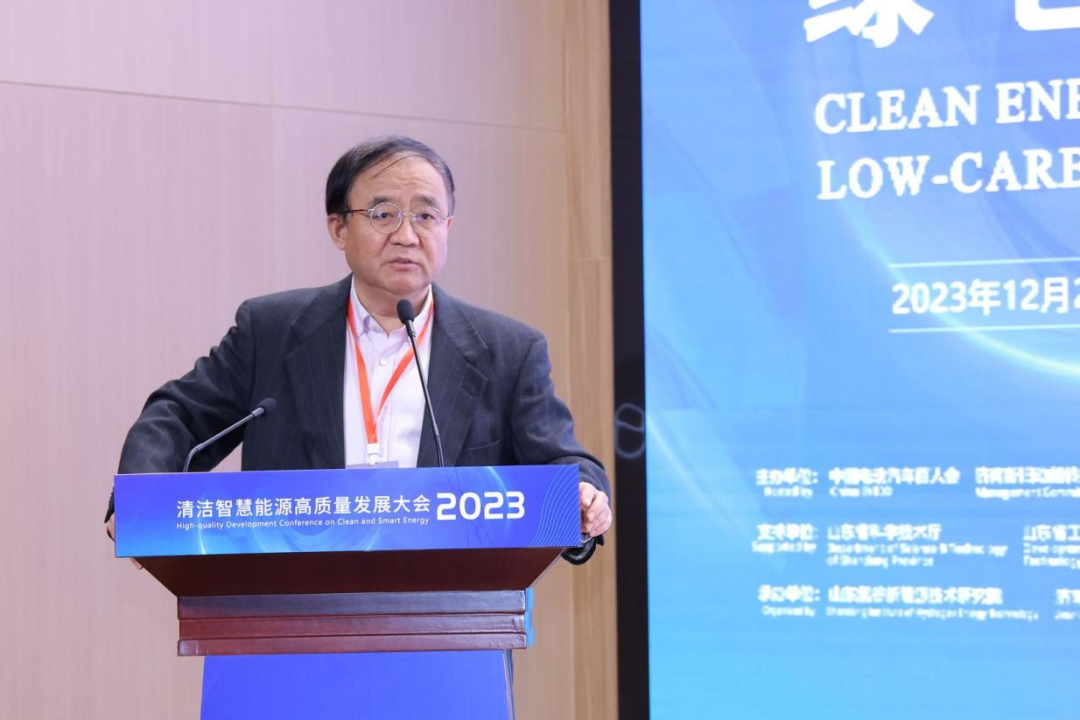
On December 21,2023, the "Clean and Smart Energy High-quality Development Conference" jointly hosted by China EV100 and Jinan Management Committee of Jinan New Energy Transformation was successfully held in Jinan, Shandong Province. With the theme of "Clean Energy promotes green and low-carbon transformation of industry", the conference, Liu Ke, foreign academician of Australian National Academy of Engineering and dean of Innovation and Entrepreneurship of Southern University of Science and Technology, delivered a keynote speech on "Green Methanol- -Green Transformation Path suitable for China's National conditions in the morning's conference". The following is a summary of the guests' views.
Liquid is currently the best energy carrier. First, the volume energy density of liquid fuel is high, the important parameter of automobile, ship and other vehicles is not mass energy density, but volume energy density, the current liquid methanol volume energy density is 4300kWh / m3, gasoline is 8600 DNA / m3, while hydrogen is only 3.2kWh / m3, natural gas is only 10kWh / m3, the volume energy density of liquid fuel is far more than gaseous fuel. Second, liquid fuel can be stored at room temperature and pressure for a long time, which is convenient for pipeline transportation and sea transportation, with low transportation cost. At present, there is a mature liquid fuel infrastructure network worldwide.
Green methanol is one of the best liquid hydrogen energy carriers. Green hydrogen has synthesized methanol, from gaseous green hydrogen to liquid green methanol, which solves the problem of volume energy density, storage and transportation of green hydrogen. The green methanol solution can also solve the range anxiety and winter charging problems of pure electric vehicles. In addition, green methanol is the path to achieve carbon neutrality at the lowest cost of the transportation field. It is unrealistic and economical to scrap the liquid infrastructure that has invested trillions of dollars to build fast charging stations and hydrogenation stations. Fill the built liquid infrastructure with green methanol, and the first generation infrastructure can be used for the next three generations (internal combustion engine, hybrid and fuel cell) vehicles.
Green methanol does not need to pursue 100% zero carbon, but to meet the low carbon methanol under the premise of carbon neutrality. In the green hydrogen methanol production route, when the carbon source is raw material or comes from carbon capture, the green energy of the product methanol reaches 100%, that is, zero carbon emission in the whole life cycle; using coal as the carbon source, the green energy of the product methanol can reach 75%, which will produce some carbon emission. In theory, human society needs moderate carbon emissions to meet the basic production behavior, that is, to balance the generated carbon and the needed carbon production. Therefore, green methanol does not necessarily need to pursue 100% zero carbon, but should cooperate with other industries to reduce carbon together, achieve a carbon balance state, and achieve carbon neutrality.
Green methanol fuel is suitable for automobile, ship and other fields. Compared with gasoline and diesel, using green methanol as a fuel can reduce particulate emissions by about 95%, about 80% nitrogen oxide emissions, about 80% carbon dioxide emissions and no sulfur emissions after combustion, driving deep decarbonization in the transportation sector. In practical application, Guiyang city has promoted 20,000 methanol taxis, which can save about 40,000 yuan of fuel costs for each taxi driver every year, and the whole Guiyang city has no public safety accidents due to methanol toxicity. Overall, clean, low cost and safety are the main driving factors for the rapid promotion of methanol vehicles. In addition, orders for methanol ships have also begun to surge in recent years, with the number of methanol fuel ships reaching 234 by the end of November 2023.
Electricity and methanol should "each do their own job". Electric vehicles and methanol fuel vehicles both have their own demand markets, and the most scientific and reasonable development mode is to match them to the right market. In the future, electric vehicles are more suitable for development in areas with relatively flat terrain and relatively high temperature; slow charging can be recharged during valley power, which is conducive to the power grid to absorb unstable renewable energy without investing trillions of dollars to expand the power grid. Green methanol hybrid vehicles can solve the pain points of too expensive, too heavy battery, range anxiety in mountainous areas, winter and fast charging station construction; the rapid upgrading of existing traditional energy filling station to methanol filling station can also reduce the expenditure on infrastructure construction.
In addition, Liu Ke also believes that green methanol is a long-term energy storage technology under the background of carbon neutrality. The progress of battery technology is crucial but cannot completely rely on batteries. Wind and solar energy should be stored, transported and applied in the form of green methanol. Increasing the transportation mode of pipe network outside the power grid can effectively improve the utilization efficiency of renewable energy, promote the transformation of coal and oil economy into green methanol economy, reduce the external dependence of oil and gas and achieve the goal of carbon neutrality in China.


